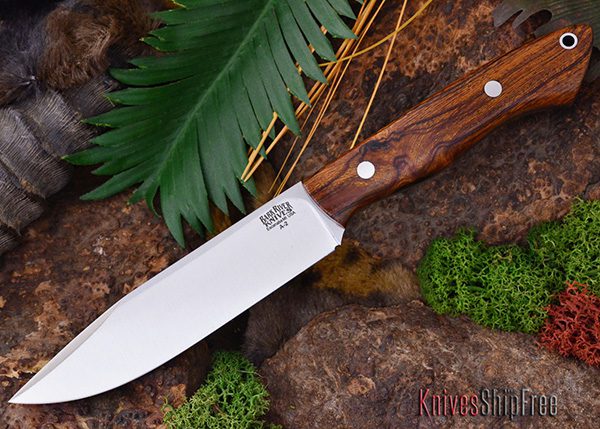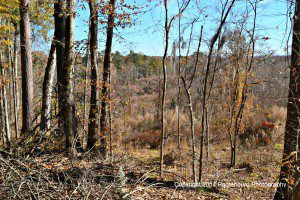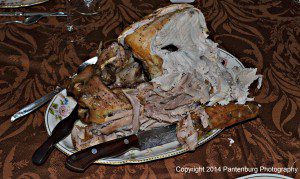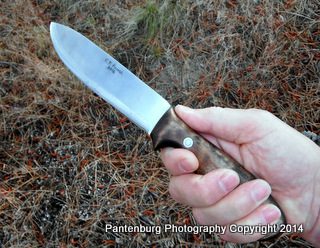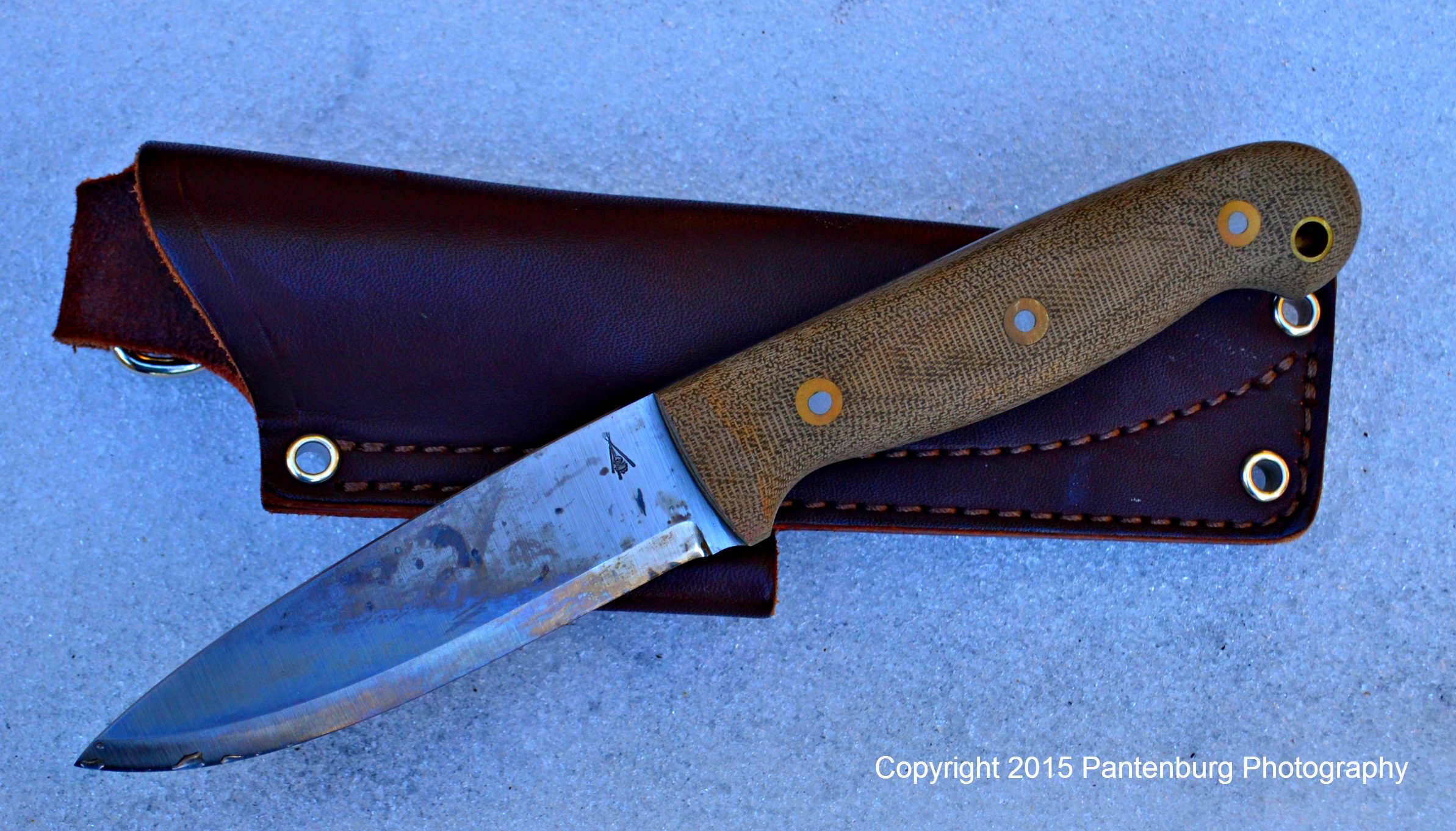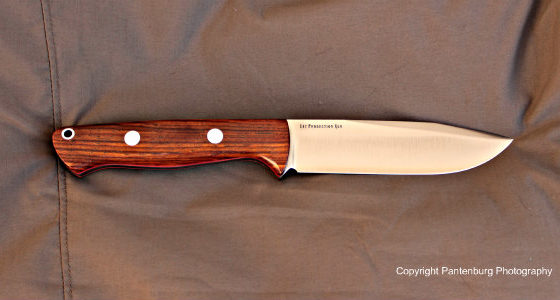Your hunting knife must be able to handle field dressing and processing a big game animal. Plus, it better be able to handle most survival tasks. The Bark River Sahara may be what you’re looking for.
by Leon Pantenburg
Bark River Knives did not supply this knife, and I was not paid to do this review.
The deer dropped at my shot. I walked up on it, paused a moment to be thankful, then went to work.
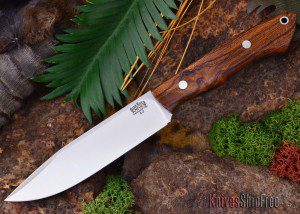
The Bark River Sahara Hunter is a designed for big game hunting. This is the desert ironwood handle.
I was hunting alone at dusk, deep in a deciduous swamp area of Mississippi. The nearest road was about one-half mile away, with lots of thick brush and rugged terrain between me and it. It was getting really dark, really fast.
I wrestled the deer onto a blue plastic tarp, and dragged it away from the tree stand area. By the light of a headlamp, I used my Sahara to gut, skin and quarter the carcass. I split the ribcage and removed the head and lower legs.
The meat was put in my culinary plastic bag, then was placed on a blue plastic tarp. I still had a long haul ahead of me, but now with a more manageable weight. The knife performed really, really well.
I love hunting in Mississippi. During warm weather, it’s like some sort of jungle survival trek, complete with alligators, clouds of mosquitoes, poison ivy and venomous snakes.
But in the fall, those same areas are magnets for whitetail deer and turkeys. I pack all necessary gear in my fanny pack. Over the years, my gear has been pared down and refined to what is needed to handle a deer by myself.
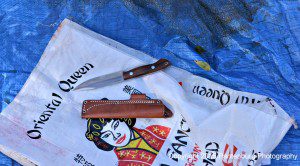
A blue plastic tarp, breathable culinary plastic bag and this Sahara were all I needed to gut, skin and quarter a whitetail deer.
Knife choice is paramount. On this hunt, I was packing a Bark River Sahara prototype with a desert ironwood handle.
For about 20 years, my big game hunting knife was a Cold Steel SRK. But I always thought the blade was too thick, and that the six-inch blade would be handier for deer hunting if it were about an inch shorter.
So when the Bark River Sahara came out in 2014, I had to have one. My prototype arrived in June, just in time for camping season.
Here are the specifications:
Overall Length: 9.9 Inches
Blade Length: 5.250 Inches
Blade Steel: A-2 @ 58-60rc
Blade Thickness: .187 Inch
Weight: 7.7 Ounces
My Sahara has the desert ironwood handle. I love that handle material, probably because I live in the Oregon high desert. But dozens of other materials and finishes are available.
The Sahara, just out of the box, showed the quality I take for granted from Bark River. Finish is impeccable, and the knife was razor-sharp.
Over the next few months, I used the Sahara a lot, mostly for bushcraft-related tasks, and some fish cleaning. Whittling, wood carving and such activities are survival-related, but the test of a hunting knife is in the field, using it for the purposes it was intended for. My chance came around Thanksgiving.
Here’s what I liked:
Handle: The Kalahari-model handle on the Sahara fits me like it was custom made. There are no hot spots from extended whittling sessions, and the handle is just about perfect for a hunting knife. I was originally concerned that the desert ironwood handle might get slippery when it got bloody, but instead, it seemed to get tacky.
Jim Stewart, of Bark River Knives, commented “I’ve always found that when wet, the material (no matter what kind, even natural material such as ASB and Sheep Horn) gets grippier. Tacky might be a better word. It’s totally unintuitive; you would think that it’d be slick with our finish.”
One reason I liked my SRK was because the Kraton handle never got dangerously slippery, no matter how messy the gutting job got. But with the well-designed, “tacky” Kalahari design, you can have a safe, good-looking handle in a variety of attractive materials.
Blade: My elk hunting buddies don’t agree on blade length. My buddy Phil, being a Texan, carries a 10-inch Bowie knife and an 8-inch Old Hickory butcher knife. Jeremy is at the other extreme – his knife is a three-inch folder. Both hunters are very successful and regularly harvest deer and elk.
My Oregon elk hunting buddies don’t agree on blade length either, but they all carry a three to six inch blade. I opt for a larger knife somewhere in the middle. I used a four-inch Cold Steel Master Hunter to skin a cow elk a couple years back, and it worked really well. My SRK has a six-inch blade. At 5.25 inches, the Sahara blade is about right for a hunting knife that may need to be used for a survival knife.
Steel: I love A-2 steel. It holds an edge forever, and is easy to keep sharp. The Sahara did all the work on my latest deer harvest, and was still shaving sharp when the job was done. The edge didn’t need a touch-up before I used it to carve the Thanksgiving turkey.
I’ll probably strop the blade, just because I have this obsessive/compulsive thing about really sharp knives, but the Sahara doesn’t need it.
Point: I love clip point knives. To me, that configuration combines sticking ability with the right belly for skinning. For field dressing a deer, a clip point is really hard to beat. The Sahara also has an effective belly on the blade, and this is the part of the knife that will do do the skinning.
While a drop or spear point are probably better choices for a survival knife, clip points are still my favorite.
Convex Grind: Every blade used to have a convex grind. Basically, that means that the entire blade grind comes down to edge. The Sahara has a convex configuration, meaning there is no secondary edge that has to be sharpened. In my experience, this makes for superior edge-holding ability and easy maintenance. (Check out this video series on sharpening convex edges!)
Spine: An often overlooked part of a blade is the spine opposite the cutting edge. The Sahara spine is ground at 90-degree angles, like an ice skate. This means the spine can be used for scraping a ferro rod to make firestarting sparks and process tinder. A backcountry hunter might get into a survival situation and he/she needs a knife that can also handle bushcraft and survival tasks. (Take a look at this post to get an idea of what to look for in a knife spine.)
Sheath: My Sahara came with a sturdy leather sheath that secures the knife safely. But for this hunt, the Sahara rode in a Sharpshooter sheath with a D-Ring. It was clipped to the outside of my fanny pack, where it dangled safely and out of the way.
While I trust the Sharpshooter sheath to secure the knife, I also ran a piece of paracord through the hole in the handle to tie the knife in.
Lanyard: There is a hole in the Sahara handle that can be used to attach a lanyard. If the field dressing job gets particularly messy, you might want to use the lanyard around your hand to keep the knife from slipping.
Overall, I am very pleased with the Sahara, and will be using it a good bit. And I like looking at it when I’m sitting on a deer stand!
If you’re considering investing in a hunting knife that could also handle many survival tasks, the Bark River Sahara Hunter is a good choice. You won’t be sorry you got one.
Please click here to subscribe to our YouTube channel.

